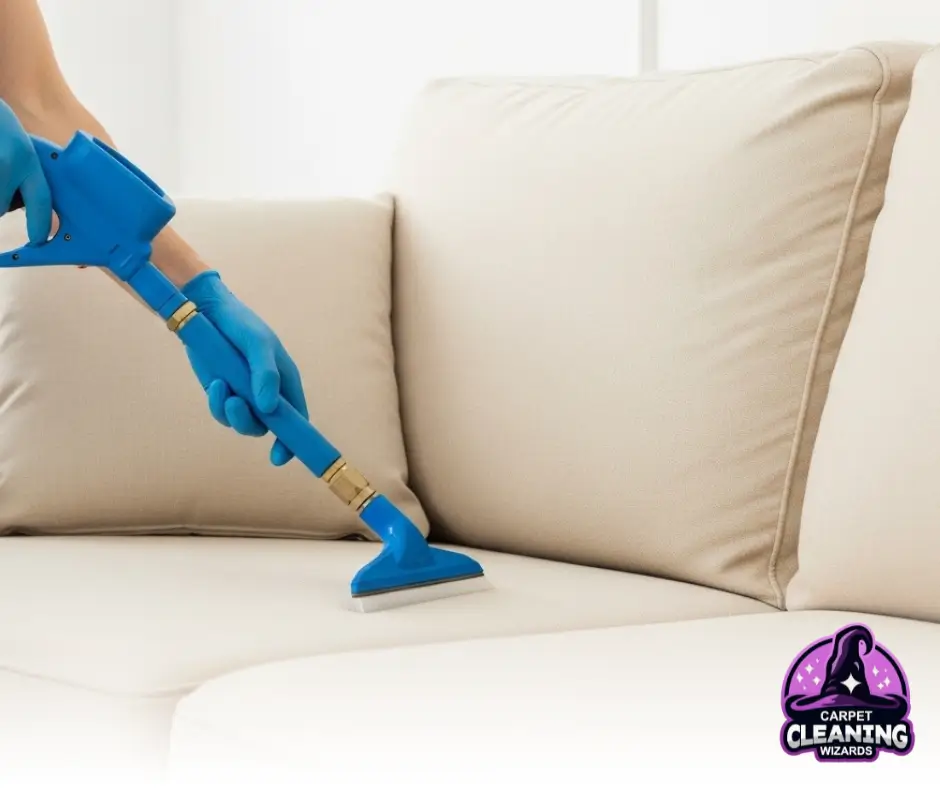Upholstered furniture adds comfort, color, and personality to your home—but it also collects dust, body oils, pet hair, and allergens over time. If your favorite chair or couch looks dull and feels grimy, it might be time for a deep upholstery cleaning. With the right techniques and habits, you can restore freshness and extend the life of your furniture.
Why Upholstery Cleaning Is Essential
Just like carpets, sofas and other fabric-covered furniture absorb a lot of debris from daily use. Without regular maintenance, this buildup can affect not only how your furniture looks but also your indoor air quality. Professional-level sofa cleaning helps eliminate embedded dirt, odors, and allergens, making your living space healthier and more inviting.
Know Your Fabric Type
Before you start scrubbing, it’s important to understand the type of fabric you’re working with. Materials like cotton, microfiber, leather, and linen all require different care. Check your furniture’s cleaning code tag—usually marked with letters like W (water-based cleaner), S (solvent-based), WS (either), or X (vacuum only). Knowing your fabric helps prevent discoloration or damage during the furniture cleaning process.
Vacuum Regularly to Prevent Build-Up
One of the most effective ways to maintain clean furniture is by vacuuming weekly using a soft brush or upholstery attachment. This removes crumbs, hair, and dust that accumulate in cushions and crevices. Regular vacuuming prevents grime from embedding deeper into the fibers, reducing the need for frequent deep upholstery cleaning.
Handle Stains Promptly
Spills happen, but the way you handle them can make all the difference. Always blot—never rub—liquids with a clean cloth to avoid spreading the stain. Use a mild upholstery-safe cleaner and test it on a hidden area first. For tougher spots, applying a gentle foam solution and letting it sit before rinsing may help lift the stain without harming the material.
Use Steam or Dry Cleaning Methods When Needed
For deeply embedded dirt or persistent odors, steam cleaning or dry foam extraction can be very effective. These methods loosen grime and sanitize the fabric without saturating it. Be sure your furniture is labeled safe for moisture or heat exposure before proceeding. If unsure, professional deep cushion cleaning may be your best bet.
Deodorize and Refresh Fabric Naturally
Want your upholstery to smell as good as it looks? Sprinkle baking soda over the fabric, let it sit for 15–20 minutes, and vacuum thoroughly. This natural deodorizer helps neutralize unpleasant smells from pets, food, and everyday use. For a light scent, follow up with a mist of fabric-safe essential oil spray.
Protect Your Furniture Between Cleanings
After a good cleaning, take steps to keep your upholstery fresh longer:
- Use washable slipcovers or throws in high-use areas
- Rotate and flip cushions regularly to prevent uneven wear
- Keep pets off furniture when possible to reduce fur and dander
- Avoid eating or drinking on upholstered surfaces to minimize spills
Fresh Furniture, Healthier Home
Clean upholstery doesn’t just look better—it also contributes to a cleaner, healthier home. By staying on top of maintenance and investing in periodic upholstery cleaning, you help protect your investment while improving indoor air quality and comfort. Whether it’s a favorite armchair or a full-size sectional, every piece of furniture benefits from a little care and attention.
Final Thoughts
Reviving your furniture doesn’t require replacing it—just a smart cleaning routine and attention to detail. With these easy tips, your upholstery can stay vibrant, fresh, and inviting year-round. So the next time your couch starts to look tired, don’t toss it—restore it with thoughtful upholstery maintenance.

